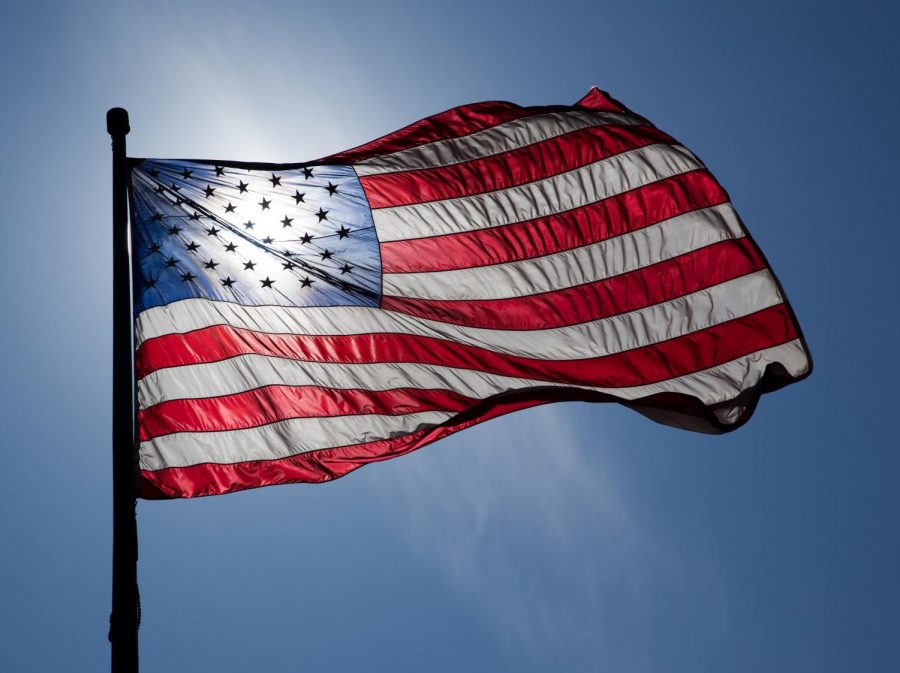Pledge causes students to stand up, or sit, for beliefs
Creative commons photo courtesy of Jnn13
In a survey of 92 CHS students, 8.7 percent reported sitting for the pledge. https://creativecommons.org/licenses/by/2.0/
June 20, 2019
Every school day at Communications High School begins with a “Good morning CHS, everybody please stand for the Pledge of Allegiance,” from Principal James Gleason. A brief pause follows the announcement as students shuffle to a stand, and then the school recites the Pledge. This is a pattern everyone has followed since kindergarten.
Well, everyone except for a few outliers. In a survey of 92 CHS students, 8.7 percent reported sitting for the pledge.
Sophomore Erin Burke of Allentown has sat for the Pledge since eighth grade.
“Teaching teenagers and, frankly, preschoolers, to say the Pledge of Allegiance is forcing an opinion,” Burke said. “It’s very hard to question something you’ve believed your whole life. I think that’s the goal of the Pledge, to integrate this sort of belief in the country.”
Sophomore Aspen Rosman of Keyport also sits for the Pledge every morning and said he does so as a way to stand up for national issues that the U.S. government does not address.
“There’s a lot of injustice going on in the world right now and the Pledge says ‘justice for all’ and for me, sitting… it’s protesting not the flag itself, but the phrase,” Rosman said.
However, for students like freshman Ellie Applegate of Fair Haven, standing for the pledge is a way to prove loyalty to the Land of the Free.
“I think it’s really disrespectful if you don’t stand,” Applegate said. “People literally sacrificed their lives, family homes… to make our nation the way it is, and to sit because of its flaws… is inconsiderate.”
Although sitting for the Pledge can cause controversy, students have a legal right to do so. History and Effective Speech teacher Bill Clark “challenged” Burke last year after noticing she sat for the Pledge and wanted to make sure she knew her rights.
“I was sitting in his class, in Effective Speech, a year ago, and he called me up in front of the class [and said] ‘Why do you sit for the Pledge?’” Burke said. “I started going through my spiel and he was like ‘No, but why can you?’”
In response to Clark’s question, Burke did her research and soon discovered the 1943 court case Barnett v. The West Virginia State Board of Education. In the case, the U.S. Supreme Court ruled that forcing students to stand and recite the Pledge of Allegiance is a violation of the First and Fourteenth amendments.
Gleason said that sometimes misunderstandings of this student right create conflicts that find their way to his office.
“Sometimes people don’t understand the law, so I do have to discuss… that students do have a right to not stand during the Pledge of Allegiance,” Gleason said. “I don’t agree with it, but… it is their right, and I respect their right.”
Senior Will Dean of Middletown, who considers himself a “Constitutional conservative,” stands for the Pledge every morning.
While he believes other students should do the same, he acknowledges that they have a right to stand up, or rather sit down, for what they believe in.
“I do recognize that it is their right to [sit], and I don’t think there should be any sort of punishment inflicted upon them. An act of political protest is absolutely justified,” Dean said.“But at the end of the day, I think we should all stand and recognize that while the flag may not symbolize perfection, it symbolizes that we’re working towards making the country a better place.”





